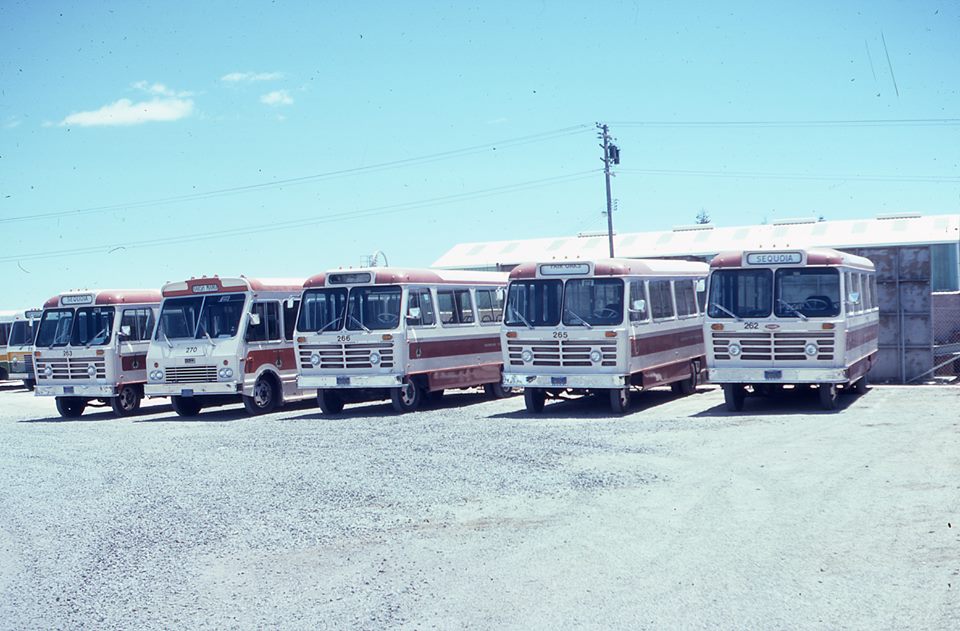“The Little Engine That Could” is the classic children’s story about an undersized yet determined railroad locomotive that kept puffing away until it reached the top of a steep hill. The book, by Wally Piper, popularized the line, “I think I can, I think I can.” It was published in 1930 and later adapted to film and song.
Perhaps it’s time to tell the tale of the “little bus that could”—the minibus service in Redwood City that had a short but very successful career.
The line, which operated from 1968 and ended in 1976 when SamTrans took over San Mateo County’s bus service, quickly drew praise. In 1972, it was featured in Nation’s Cities, a prestigious magazine published by the National League of Cities. Among other things, the article lauded the bustling fleet of six buses for keeping prompt half-hour schedules and dropping off passengers who flagged down the vehicles anywhere along the routes.
—
This story first appeared in the December edition of Climate Magazine
—
Bob Bury, Redwood City’s mayor from 1968 to 1972, said the bus service was “one of the most satisfying things we have accomplished in government.” As if speaking about today’s issues, Bury noted that people without cars could get to their jobs more easily, and older people could be more independent by being able to get around without depending on others to take them somewhere.
Is there a chance the line might be reincarnated? Doesn’t look good. Rick Hunter, chair of Redwood City’s current planning commission, says SamTrans recently reviewed its service and developed recommendations in a report entitled “Reimagine SamTrans.” If the old bus line “isn’t reflected in that document, there aren’t any plans to have it return,” Hunter told Climate.
Minibuses the Key
With such great praise, what went wrong? Nothing, at least not with the bus system itself. Like other Peninsula lines, Redwood City’s became a thing of the past in 1976 when SamTrans started rolling. At that time, an overriding problem was the lack of north-south bus service from one Peninsula city to another. Today, a major concern is east-west service.
What made the Redwood City system nearly unique were the buses and the labor contract. Instead of opting for big buses that had room for many passengers, which often meant a lot of empty seats, city officials went for those that seated 17 people with standing room for eight more. The contract was with an organization called ServiCar of Northern California, which provided drivers and partial maintenance. A key feature of the pact included an incentive clause that gave drivers raises when revenues went up—and they did.
The buses worked five routes, starting at what is now Redwood City’s Caltrain station but was then the depot for the old Southern Pacific railroad, which merged with the Union Pacific in 1996. They had regular stops that included Whipple Avenue, Woodside Road, Marsh Manor, Farm Hill and Roosevelt. Before the unusual system was born, Redwood City, like most other towns, contracted with private bus companies. In Redwood City, the line was Peninsula Transit, which dropped to just one bus in 1967, resulting in outrage from stranded passengers. City council members up for reelection took note of the public frustration and called for a “mini muni” service in the county seat.
It was initially estimated that about 600 people would ride the buses every day. The fare was 25 cents and officials figured the city would have to cover about $100,000 of the yearly $150,000 operating cost. The forecast was much brighter by the end of the first year of operation, when the deficit dropped to $63,000 and the number of passengers turned out to be far more than expected. In 1976, the nine buses carried more than 2,000 passengers a day.
Art Balsamo was the city director of transportation when the first buses rolled out on a rainy April morning in 1968. Interviewed in 1976 when SamTrans took over, he recalled that the line had few problems. “The buses were serving the people, and they knew it and took care of them,” he said. Balsamo was asked if he would have done anything differently. His answer: “How do you change success?”
The system did have a few gaps. For one thing, there was no Sunday or late evening service. The system was designed to run on a 13-hour schedule during the week, starting at 6 a.m. and ending at 7:30 p.m. The buses ran for just nine hours on Saturday. Whatever the shortcomings, they must have been few. Researchers at the history room in Redwood City’s main library found no reported complaints.
Surprisingly, few people know of the bus line’s history. I asked Hunter if there had been a feasibility study about bringing back the line. He put the question to transportation manager Jessica Manzi. Hunter said Manzi had “heard about the service, likely from your articles, but didn’t know anything more about it.” The article he referred to appeared in the June 2016 issue of Climate. Apparently, it didn’t gain much traction. I will keep writing about what I regard an important, and overlooked, part of city history until it gets the attention it deserves – all the time telling myself, “I think I can, I think I can.”






